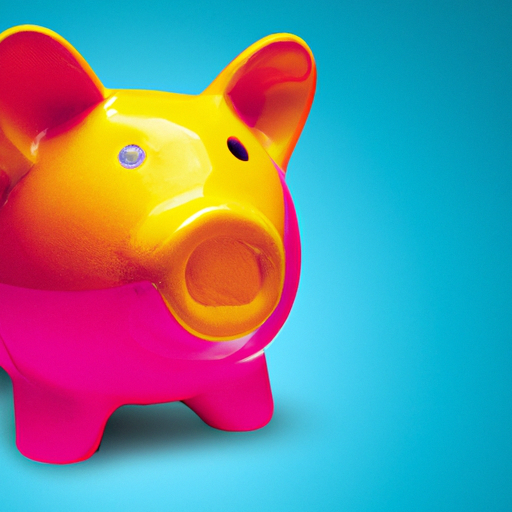Are you in search of budgeting software that can help you manage your finances effectively? Look no further! In this article, we will discuss the cost of budgeting software and whether there are any subscription fees or hidden charges associated with it. Additionally, we will explore whether the software provides security features such as two-factor authentication to safeguard your financial data. So, if you’re eager to find the perfect budgeting software without any surprises, keep reading!

Cost of the Budgeting Software
When it comes to budgeting software, one of the key factors to consider is the cost. Understanding the pricing options available can help you make an informed decision about which software suits your budgeting needs. In this article, we will explore the different pricing models, types of budgeting software, and the importance of security features. Let’s dive in!
Pricing Model Options
Budgeting software typically offers two main pricing models: one-time purchase and subscription fee. Each model has its own pros and cons, so it’s important to understand them before making a decision.
One-time Purchase
Some budgeting software providers offer the option to make a one-time purchase. This means that you pay a fixed price upfront and have lifetime access to the software. This can be a cost-effective option if you are looking for long-term use without recurring fees. However, it’s important to keep in mind that updates and support may not be included in the initial purchase price, and you may need to pay extra for those features.
Subscription Fee
Another pricing model commonly offered by budgeting software providers is a subscription fee. With this model, you pay a recurring fee, usually on a monthly or annual basis, to access the software. The advantage of a subscription fee is that it often includes regular updates and customer support, ensuring you have access to the latest features and assistance when needed. However, the ongoing cost may not be suitable for everyone’s budget and financial needs.
Hidden Charges
In addition to the upfront cost or subscription fee, it’s important to be aware of any hidden charges that may be associated with the budgeting software. Some providers may charge extra for advanced features, premium support, or additional integrations. Make sure to carefully review the pricing details and terms of service to avoid any unexpected expenses down the road.
Types of Budgeting Software
When it comes to budgeting software, there are generally two types to choose from: free software and paid software. Let’s take a closer look at each type to understand their features, limitations, and other considerations.
Free Software
Free budgeting software, as the name suggests, is available for no cost. This can be an attractive option for individuals or small businesses on a tight budget. Many free budgeting software options offer basic functionalities such as expense tracking, goal setting, and basic budgeting tools.
Features and Functionality
Although free budgeting software may lack some advanced features found in paid software, many still provide valuable tools to help you manage your finances. These tools often include budget tracking, expense categorization, financial goal setting, and basic reports. While the features may be more limited compared to paid software, free options can still be quite useful for personal budgeting purposes.
Limitations
One of the limitations of free budgeting software is that they may not have as robust or customizable reporting options as paid software. Additionally, integration with other financial accounts or platforms may be limited or non-existent. It’s also important to note that free software may display ads or offer premium features for an additional cost.
Security Features
When considering free budgeting software, it’s important to evaluate the security features they offer. While some free options may not provide advanced security measures like two-factor authentication, encryption, or secure cloud storage, others may still prioritize the security of your financial data. It’s essential to do your research and select a software that aligns with your security requirements.
Paid Budgeting Software
Paid budgeting software often offers more robust features and functionalities compared to their free counterparts. These are typically developed by established software providers and offer more advanced tools to manage your finances effectively.
Pricing Tiers
Paid budgeting software often offers different pricing tiers to cater to the needs of different users. These tiers typically provide varying levels of features and support, allowing you to choose the plan that best suits your budget and requirements. The higher-priced tiers may offer additional features such as advanced reporting, investment tracking, or integration with other financial platforms.
Features and Functionality
Paid budgeting software usually offers more advanced features and functionalities compared to free software. These may include customizable reports, goal tracking, bill payment reminders, real-time syncing across multiple devices, and advanced budgeting tools. If you need more comprehensive financial management capabilities, paid software may be the better option for you.
Subscription Plans
Paid budgeting software often requires a subscription fee, which can be billed on a monthly or annual basis. This fee typically grants you access to ongoing updates, customer support, and any additional features included in your chosen plan. Having a subscription plan ensures that you have access to the latest software updates and ongoing support, which can be crucial for effective budgeting.
Hidden Charges
Similar to free software, it’s important to be aware of any hidden charges associated with paid budgeting software. Carefully review the pricing details and terms of service to understand if there are any additional charges for specific features or services. Being aware of these potential hidden charges can help you plan your budget accordingly and avoid any surprises.
Comparison of Free and Paid Budgeting Software
Now that we have explored the different types of budgeting software, let’s compare free and paid options in terms of cost, features, functionality, support, updates, and security.
Cost
The cost is one of the main differentiators between free and paid budgeting software. Free software offers a no-cost option, making it a popular choice for budget-conscious individuals. On the other hand, paid software requires a recurring subscription fee, which varies depending on the chosen plan and provider. Paid software usually offers more advanced features, but it’s important to evaluate if the extra cost is justified for your specific needs.
Features
Paid budgeting software generally offers a wider range of features compared to free software. These features can include advanced reporting, investment tracking, bill payment reminders, and integration with other financial platforms. Free software often provides basic tools for budgeting and expense tracking, but may lack certain advanced functionalities.
Functionality
Free software can be a great option for simple budgeting needs, but paid software often offers more comprehensive functionality. Paid options typically provide additional tools for goal tracking, financial planning, and customized reporting. The level of functionality you require will depend on your individual or business budgeting needs.
Support and Updates
One of the advantages of paid budgeting software is the access to regular updates and customer support. Paid software providers often release updates and improvements to their software to ensure users have the best experience. Customer support is also more readily available with paid options, which can be helpful if you run into any technical issues or need assistance with using the software effectively.
Security
While both free and paid budgeting software may offer some level of security, paid software often provides more advanced security features. These can include two-factor authentication, encryption of sensitive data, secure cloud storage, and audit trails. If data security is a top priority, investing in paid software may provide additional peace of mind.
Factors Affecting the Cost of Budgeting Software
The cost of budgeting software can vary depending on several factors. Let’s take a look at three main factors that can influence the cost.
Market Competition
The level of competition in the market can have a significant impact on the cost of budgeting software. In a highly competitive market, providers may offer more affordable pricing to attract customers. On the other hand, in a market with limited competition, providers may have more flexibility to set higher prices. Considering the current market competition and exploring multiple options can help you find budgeting software that fits your financial requirements.
Software Provider Reputation
The reputation and track record of the software provider can also affect the cost of budgeting software. Established providers with a history of delivering reliable and feature-rich software may charge a higher price for their offerings. This higher cost is often justified by the quality of the software and the additional support they provide. Lesser-known providers may offer more affordable options, but it’s important to consider their reputation and user reviews before making a decision.
Additional Services and Integrations
Some budgeting software providers offer additional services and integrations that can enhance your financial management experience. These services may include automatic bank data synchronization, advanced reporting, tax filing assistance, and investment tracking. While these offerings can be valuable, they often come at an additional cost. Consider whether these additional services are necessary for your budgeting needs and if they are included or available for an extra fee before finalizing your decision.

Security Features of Budgeting Software
When evaluating budgeting software, it’s essential to consider the security features they offer to protect your financial data. Let’s explore some important security features to look for.
Two-factor Authentication
Two-factor authentication adds an extra layer of security to your budgeting software. It requires you to provide two pieces of information to log in, typically a password and an additional verification method such as a unique code sent to your mobile device. This feature makes it more difficult for unauthorized individuals to access your account.
Encryption and Data Protection
Encryption is a crucial security feature that ensures your financial data is protected. Look for budgeting software that uses encryption algorithms when storing and transmitting your data. This helps safeguard your sensitive information and prevents unauthorized access.
Secure Cloud Storage
If a budgeting software provider offers cloud storage for your financial data, it’s important to ensure that it is secure. Look for providers that use reputable cloud service providers and employ robust security measures to protect your data from potential breaches or unauthorized access.
Audit Trails
Audit trails are a valuable security feature that allows you to track any changes made to your financial data within the software. This feature can help you identify any unauthorized modifications or potential security breaches. It provides an added layer of transparency and accountability.
Importance of Security in Budgeting Software
The security of your financial data should be a top concern when choosing budgeting software. Let’s explore the importance of security in more detail.
Protecting Financial Data
Budgeting software often requires you to input sensitive financial information such as bank account details, credit card numbers, and income data. Ensuring the security of this data is crucial to prevent it from falling into the wrong hands and being misused. Choosing software with robust security features can help safeguard your financial information.
Preventing Identity Theft
Identity theft is a serious concern in an increasingly digital age. Unauthorized access to your personal and financial information can lead to significant financial loss and other consequences. Selecting budgeting software with strong security features can help minimize the risk of identity theft by ensuring the confidentiality and integrity of your data.
Complying with Regulations
Depending on your location and the nature of your financial activities, there may be specific regulations that dictate how your financial data should be handled and secured. Choosing budgeting software that complies with relevant regulations adds an extra layer of protection and ensures that your data is managed in accordance with legal requirements.
Considerations Before Choosing a Budgeting Software
Before finalizing your decision on which budgeting software to choose, there are a few key considerations to keep in mind.
Budgeting Needs
Consider your specific budgeting needs and goals. Are you looking for basic expense tracking and budget management, or do you need more advanced features such as investment tracking or bill payment reminders? Understanding your needs will help you narrow down the available options and choose software that aligns with your requirements.
Security Requirements
Evaluate your security requirements and the sensitivity of the financial data you will be inputting into the software. If you handle highly sensitive information or have specific security concerns, prioritize budgeting software that offers advanced security features such as two-factor authentication, encryption, and secure cloud storage.
Cost-effectiveness
While cost is an important factor, it should not be the sole determining factor when choosing budgeting software. Evaluate the features, functionality, and security features offered by different software providers and consider the overall value they provide. A slightly higher cost may be justified if the software offers the features and security you require for effective financial management.
Conclusion
Choosing the right budgeting software is essential for effective financial management. Understanding the different pricing models, types of software, security features, and other considerations can help you make an informed decision. Consider your budgeting needs, evaluate the security features, and weigh the costs against the features provided. By doing so, you can find the budgeting software that best fits your financial goals and ensures the security of your sensitive data. Happy budgeting!

